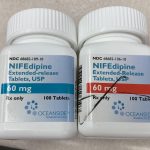Why Is It Bad To Take Metamucil Before Bed (5 Reasons)

The gastrointestinal (GI) tract, also known as the digestive system, is a complex system that includes the esophagus, stomach, small intestine, large intestine, rectum, and anus. Gastrointestinal disorders can affect any part of this system and can cause a variety of symptoms such as abdominal pain, bloating, constipation, diarrhea, and changes in bowel habits.
Constipation is the most common gastrointestinal disorder that affects many people at some point in their lives. It is characterized by infrequent bowel movements (less than three times per week), difficulty passing stools, and hard, dry stools. Some common causes of constipation include a low-fiber diet, dehydration, lack of exercise, certain medications, and medical conditions such as irritable bowel syndrome (IBS) or hypothyroidism.
What is Metamucil?
Metamucil is a brand of psyllium-based dietary supplement that is used to treat constipation, diarrhea, and other gastrointestinal disorders. Psyllium is a type of soluble fiber that is derived from the husks of the Plantago ovata plant, which is native to India and Pakistan.
The brand Metamucil was first introduced in the United States in 1934 by G.D. Searle & Co. as a laxative and bulk-forming agent. The product was initially sold as a powder that was mixed with water or juice and taken orally.
Over time, Metamucil has expanded its product line to include a variety of formulations, including capsules, wafers, and ready-to-drink beverages. The brand has also expanded its marketing efforts to target a wider audience, including individuals who are seeking to manage their cholesterol levels and maintain overall digestive health.
Today, Metamucil is a widely recognized brand that is available in many countries around the world. It is commonly used as a dietary supplement to support digestive health and regularity, and it has been the subject of numerous clinical studies that have demonstrated its efficacy in treating various gastrointestinal disorders.
How is Metamucil taken?
Metamucil is typically taken orally, and it is available in several different forms, including powders, capsules, wafers, and ready-to-drink beverages. The specific instructions for taking Metamucil can vary depending on the product formulation and the reason for use, but in general, the following guidelines apply:
• Metamucil powder: Mix the recommended amount of powder (usually one to two teaspoons) with water or another liquid, stir well, and drink immediately. It is important to drink plenty of water along with Metamucil to help prevent dehydration and ensure that the product is effective.
• Metamucil capsules: Swallow the recommended number of capsules (usually two to six) with a full glass of water. It is important to drink plenty of water with Metamucil capsules to help prevent the capsules from swelling and becoming lodged in the throat or esophagus.
• Metamucil wafers: Chew the recommended number of wafers (usually two to four) and follow with a full glass of water.
• Metamucil ready-to-drink: Shake the bottle well and drink the recommended amount (usually one serving) immediately.
The specific dosing instructions for Metamucil may vary depending on the individual’s age, weight, and medical condition, as well as other factors such as their diet and level of physical activity. It is important to follow the dosing instructions provided on the product label or by the healthcare provider and to avoid taking more than the recommended amount.
Why Is It Bad To Take Metamucil Before Bed (5 Reasons)
While Metamucil can be taken at any time of day, it is generally not recommended to take it before bed. Here are some reasons why:
1. Disrupts sleep: Metamucil can cause a feeling of fullness in the stomach, which can be uncomfortable when lying down to sleep. This can lead to disrupted sleep and insomnia.
2. Heartburn: Taking Metamucil before bed can increase the risk of heartburn and acid reflux, which can cause discomfort and interfere with sleep.
3. Dehydration: Metamucil works by absorbing water in the intestine, which can lead to dehydration if not enough water is consumed along with it. Taking Metamucil before bed can increase the risk of dehydration during the night.
4. Bowel movements: Metamucil can stimulate bowel movements, which can be disruptive during the night and interfere with sleep. It is generally recommended to take Metamucil at least a few hours before bedtime to allow for bowel movements to occur before going to sleep.
5. Interference with medication absorption: Metamucil can interfere with the absorption of certain medications, including some antibiotics and thyroid hormone replacement medications. Taking Metamucil before bed can increase the risk of interference with these medications if they are also taken at bedtime.
In general, it is best to take Metamucil during the day, with plenty of water, and at least a few hours before bedtime. However, the specific timing and dosing instructions may vary depending on the individual’s medical condition and other medications they may be taking. It is important to consult with a healthcare provider to determine the best timing and dosing schedule for Metamucil.
Additionally, some people may experience adverse side effects from taking Metamucil, such as bloating, gas, and abdominal discomfort. These side effects can be more pronounced if Metamucil is taken before bed, when the body is in a more relaxed state.
Finally, it is important to note that Metamucil is not a substitute for a healthy diet and lifestyle. While it can be helpful in treating constipation and other gastrointestinal issues, it should not be relied upon as the sole solution to these problems. Maintaining a healthy, balanced diet, drinking plenty of water, and getting regular exercise can also help promote digestive health and regularity.
Metamucil Alternatives You Can Take Before Bed
While it is generally not recommended to take fiber supplements like Metamucil before bed, there are some alternatives that may be taken before bed to help promote regularity and improve bowel movements:
1. Magnesium citrate: Magnesium citrate is a laxative that works by drawing water into the intestine and stimulating bowel movements. It can be taken before bed to help alleviate constipation and promote regularity.
2. Senna: Senna is another type of laxative that can be taken at night, it works by stimulating the muscles in the intestine, which can help promote bowel movements. It is available in a variety of forms, including tablets, capsules, and teas.
3. Probiotics: Probiotics are live bacteria and yeasts that can help promote digestive health and regularity. They are available in supplement form and may be taken before bed to help promote bowel movements.
It is important to note that these alternatives should only be used as directed, and should not be relied upon as the sole solution for constipation or other gastrointestinal issues. It is also important to consult with a healthcare provider before taking any new supplements or medications, especially if you are taking other medications or have an underlying medical condition.





